- Expert advice/
- Zola behind the scenes/
- Sweepstakes/
- Sweep Train vs. Court Train: Which One's Right for You?
- Sweepstakes
Sweep Train vs. Court Train: Which One's Right for You?
Both a sweep train wedding dress and a court train wedding dress offer just the right amount of elegance without the unnecessary stress of a lengthy train. Here’s what you need to know about them.
Last updated February 5, 2024
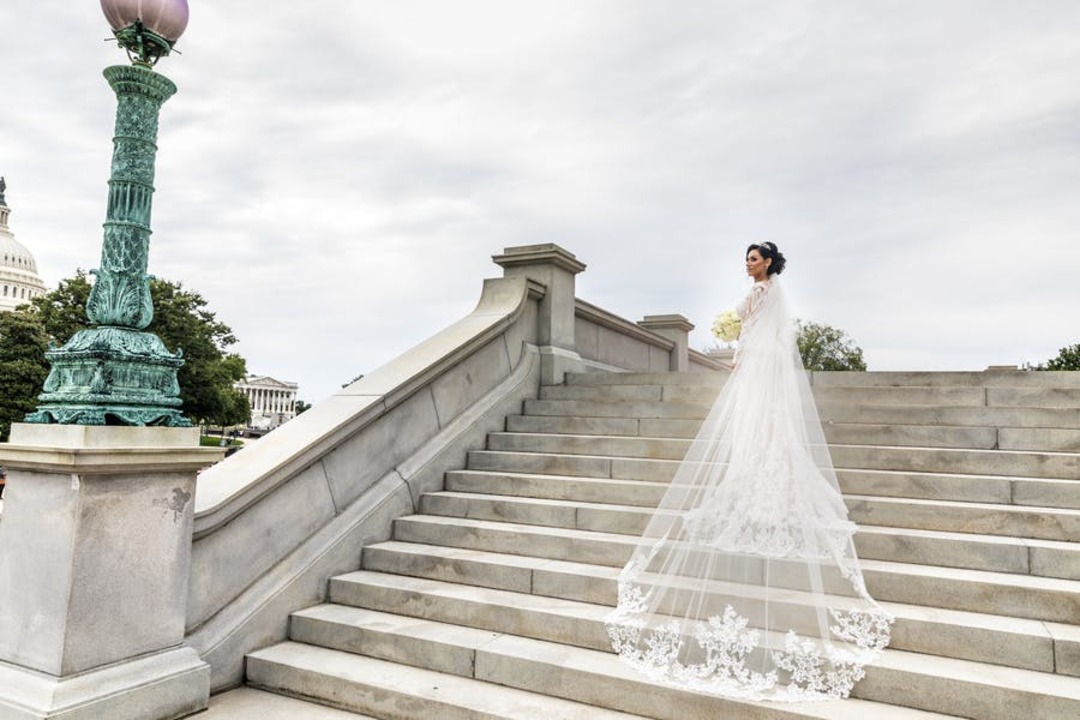
Shopping for a wedding dress is no easy feat, especially when there’s so much pressure to look your very best on your wedding day. It can mean attending numerous bridal appointments and trying on dozens of gowns to find The One. From sweetheart to deep V-neck and ball gown to sheath, there are plenty of necklines, silhouettes, and styles to compare, making it easy to get lost in a sea of white.
You may be surprised to find that there’s quite a variety of wedding dress train types to choose from as well. Each style has a name, specific length, and defining attributes that make it unique. From the shortest to the longest, you should explore all the different types before deciding which one is right for you. While it may sound like just one more thing to worry about, the wedding train will affect you more than you think, from your ability to move in the dress to the cost of its alterations.
Today, we’ll compare the shortest of the two wedding dress train styles: the sweep train and the court train. If you are wary of a long train, but do want some drama at the back of your dress, one of these two styles is probably just right for you.
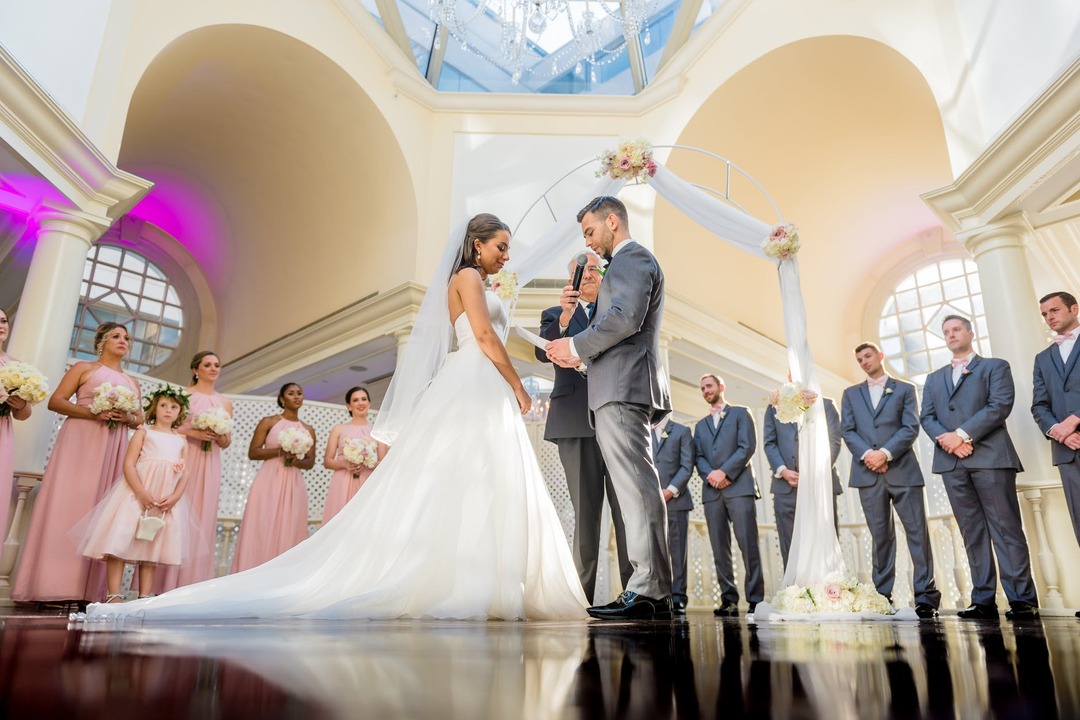
The Sweep Train Wedding Dress
What Is a Sweep Train?
A sweep train, also known as a “brush” train because it just brushes the ground, is the shortest of all wedding dress trains. It falls gracefully from the back of the skirt of the bridal gown and extends only six inches to one foot behind the bride. As its name suggests, it creates a romantic sweeping look that follows the bride wherever she goes.
Best For:
A sweep train is the most manageable of all wedding dress trains, because it’s the shortest in length. This makes it best for the low-maintenance bride who wants to let her dress trail behind her. She won’t need to worry about bustling it or carrying it, because it won’t get in the way. It’s an ideal choice for an outdoor wedding, because it won’t collect too much dirt or sand while she walks. Picture a beachfront ceremony or a backyard wedding where the breezy, romantic look will fit in just right. However, it can shine at a simple indoor spot like a courthouse or an intimate restaurant, too.
Sweep trains look great on mermaid wedding dresses or trumpet silhouettes that flare out just at the bottom, but can also pair well with straight styles that just need a little dash of drama.
Picture It:
Crystal T-Back Gown, Photo via David’s Bridal The sweep train on this beautiful halter gown flares out from behind the knees. This allows the dress’s stretch crepe fabric to skim the bride’s curves and extend into a soft, yet dramatic train.
Tadashi Placid Gown, Photo via BHLDN This fashion-forward lace gown is given the bridal touch with a subtle sweep train that trails the bride just a bit and balances the volume of the dress’s flutter sleeve.
Hestia Dress, Photo via Reformation The sweep train on this lace gown counters the long sleeves and deep V on top, creating symmetry and just the right amount of volume. Lace dresses work best with sweep trains, because the short length protects the delicate fabric from snagging.
Flower Dress from The White One, Photo via The Knot The back of this dress is all about the sheer floral lace at the top, but the buttons lining the center seam that lead to the perfectly long sweep train complement it beautifully. This fabric is also perfectly suited for a train of this length and won’t wrinkle as the bride walks.
Arlow Gown, Photo via Grace Loves Lace This slinky silk bridal gown is made for the minimalist bride. Its barely-there sweep train is just enough to make it wedding day-worthy. The style and the length of its train make it comfortable and lightweight, yet glamorous and elegant.
The Court Train Wedding Dress
What Is a Court Train?
A court train falls between one and two and a half feet behind the bride and extends from the waist of the dress’s skirt, creating volume and drama. This style is similar to the popular chapel style train, but shorter in length, removing the need for a bustle. The court train is also extremely versatile; it works well with a variety of silhouettes and fabrics.
Best For:
A court train is a classic choice that will feel timeless and bridal on any gown. It will give the bride a princess feel without all the bulky fabric, plus all the freedom of movement she needs. This makes the court train an ideal choice for whimsical outdoor wedding venues, such as the woods or lakefront, where volume without hassle is important. It’s also great for the bride who wants the look and feel of a ball gown, but doesn’t want to deal with a heavy-duty wedding dress train or a difficult bustle. It goes great with A-line, sheath, and fit-and-flare silhouettes—or any gown that has a waistline.
Picture It:
Willow by Waters Geranium Gown, Photo via BHLDN
This court train begins where the velvet ribbon ends for a feminine and ethereal look. The lace applique completes this style and makes it the perfect choice for a garden soiree or a classic ballroom wedding.
V-neckline A-line Wedding Dress with Lace & Glitter, Photo via Kleinfeld
Romantic and bohemian touches come together to create this tulle and lace wedding gown that features a tiered court train. The mixed materials and sparkly sheen create the drama, so the train doesn’t have to.
Viktor & Rolf Bow-Back Crystal Gown, Photo via The Knot
The court train on this silk gown is embellished with crystals. That train combined with the low back that’s tied together with a big bow makes this dress extremely striking from behind. See, there’s no need to go bigger.
Aurora Rose Gold Wedding Gown, Photo via Claire Pettibone
The perfect train does exist. This French embroidered tulle skirt fans out into a rose-colored court train that’s sprinkled with gold sparkles. Underneath, a sweep-length train ensures you can see every beautiful detail without getting in the way.
Leigh Ball Gown, Photo via Jenny Yoo
Yes, you can have a ball gown and a court train. This strapless ball gown is embroidered with lace florals and skirted with just the right length train for an elegant, yet modern, overall look. Light organza fabric makes it easy to dance the night away and show off the beautiful skirt.
Sweep Train vs. Court Train
The main differences between a sweep train wedding dress and a court train wedding dress are the length of each style train and where it extends from on the dress. Once you understand the differences you will not only be able to spot one or the other out from a crowd, but also be able to select the style that’s right for you.
Length
The court train can be a foot to a foot and a half longer than the sweep train, which visually makes a big difference. The benefit of being longer is that the court train is a bit grander. If your wedding is more formal, a court train will better match the style and venue. However, the benefit of being shorter is that the sweep train is easier to travel in and with. If you’re having a destination wedding on a beach or eloping, a sweep train will be just right.
Volume
The court train extends from the waist, which adds more volume to the back of the dress while the sweep train falls from lower on the back of the dress or even straight from the hem. The additional volume of a court train is great if you want a fuller skirt or a whimsical feel. However, if you want a more fitted silhouette or a sleeker feel, a sweep train is the better bet. Each style train can feel dramatic in its own right, but only one will be the kind of drama you’re looking for.
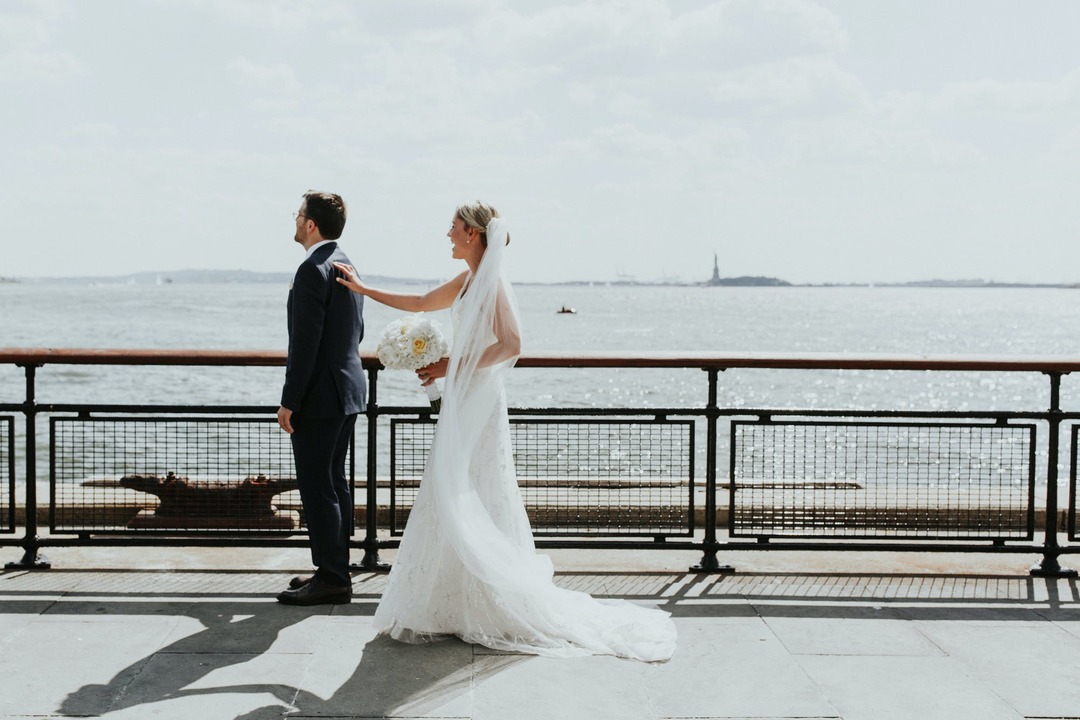
Which One Is Right for You?
A sweep train and a court train are both beautiful options that will add elegance to the end of your dress without the unnecessary hassle of a long train. However, if you want to go bigger and bolder, you can consider longer-length trains, such as the popular chapel train, which extends four feet behind the bride or the cathedral train length, which extends six to seven feet behind the bride. These trains, given that they are much longer, will require a bustle for the reception. Or, you may choose to forgo the train altogether and opt for a simple floor-length gown.
Whether you decide now or later, knowing the difference between a sweep train wedding dress and a court train wedding dress will help you on your hunt for the right dress. With the unique styles in your memory, you can go forth and conquer your bridal appointments with confidence.
Up next for you

Train or No Train? The Pros and Cons of Wedding Dress Trains
Advice
To have or not to have a wedding dress train? That is the question we will help you answer today.
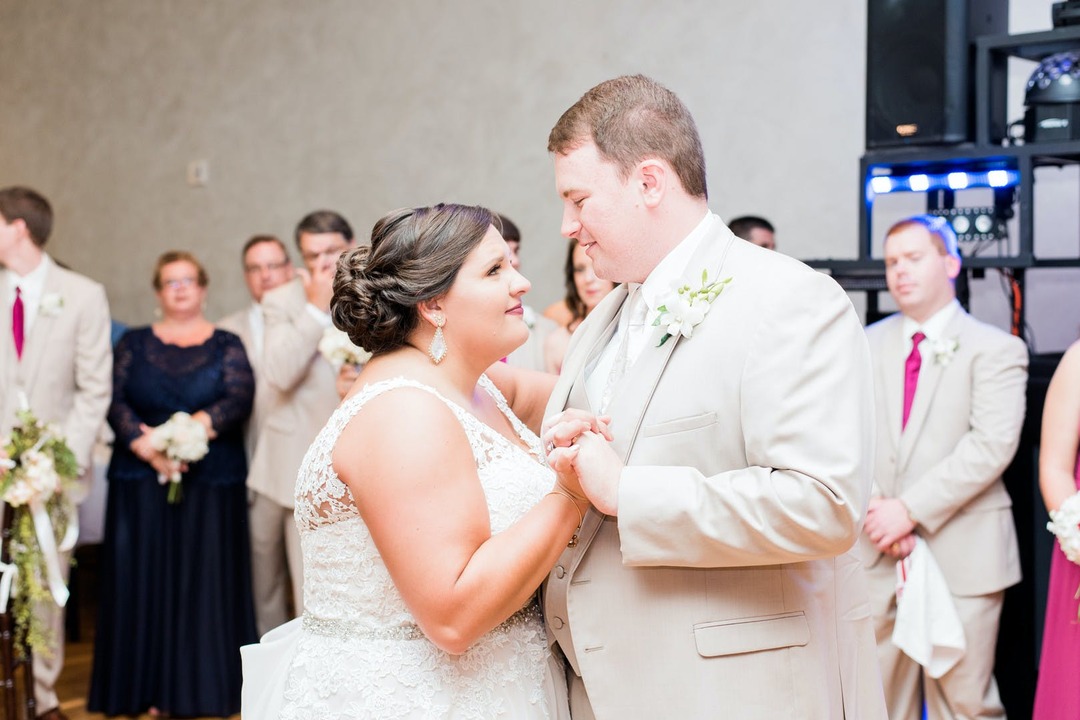
How to Dance in a Wedding Dress + 11 Wedding Dress Options
How-To
You don’t have to sacrifice your dance moves for your dream dress. We’ll show you how to dance in a wedding dress with a train, so you can party all night long.
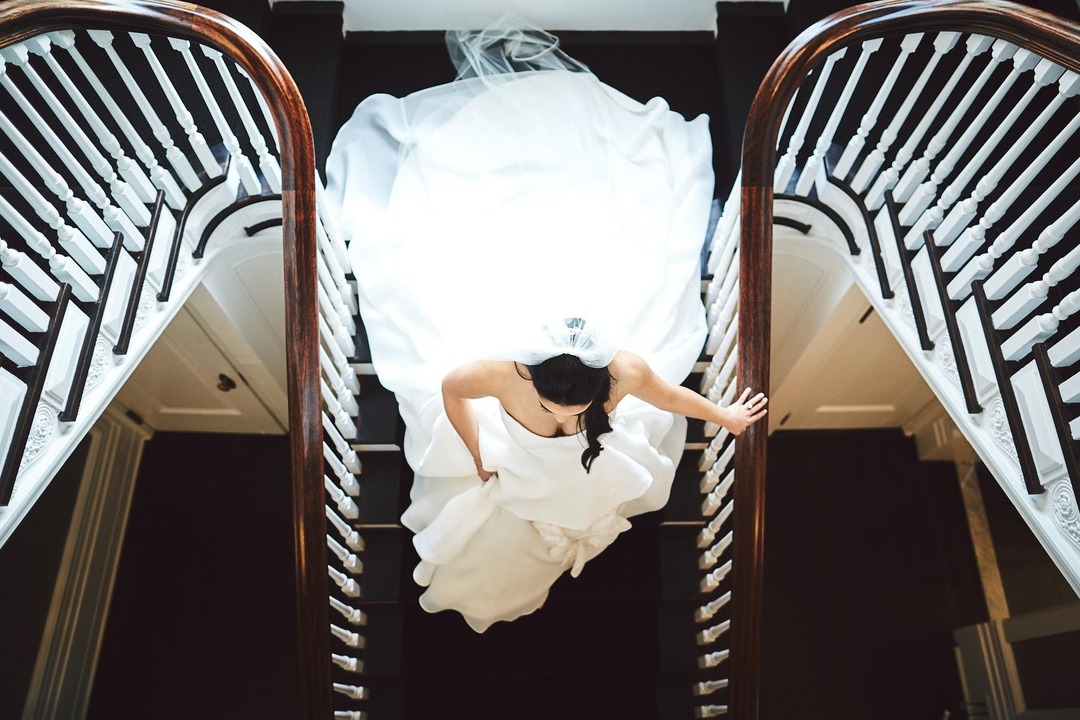
What Are the Different Types of Wedding Dress Trains?
Inspiration
Just like weddings and the couples who plan them, wedding dress train types come in all different styles. We’ll help you find the right one for you.
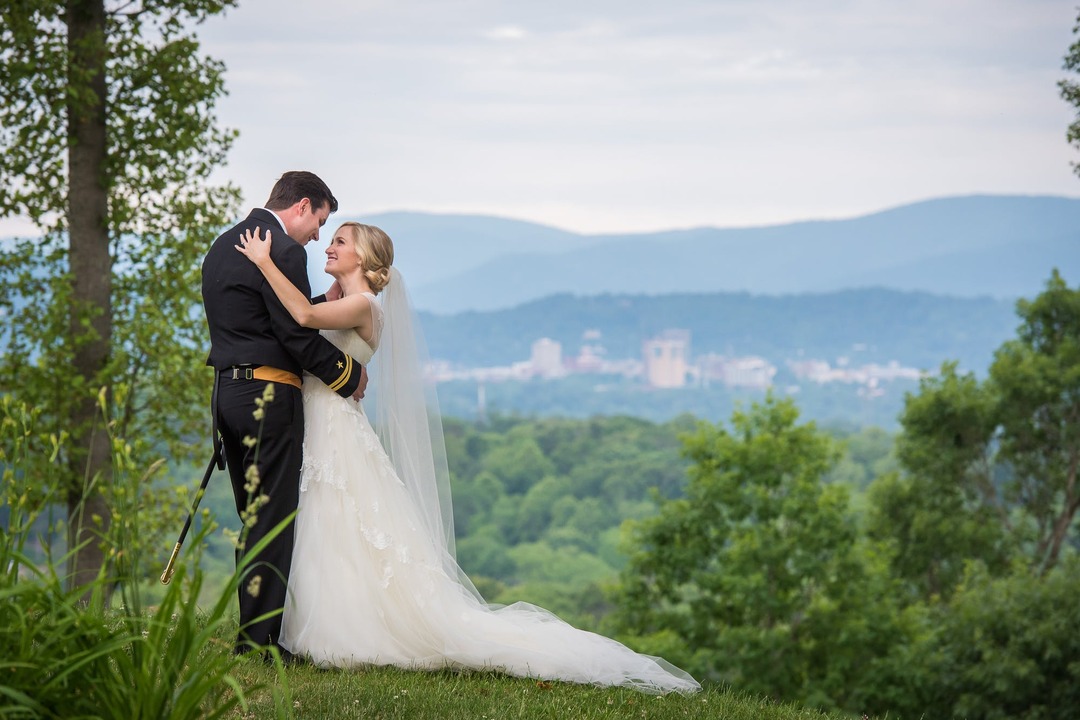
How Do You Attach a Train to a Wedding Dress?
How-To
If you’re looking to add that “je ne sais quoi” to your dress, a detachable wedding train may be right for you.
- Expert advice/
- Zola behind the scenes/
- Sweepstakes/
- Sweep Train vs. Court Train: Which One's Right for You?
Find even more wedding ideas, inspo, tips, and tricks
We’ve got wedding planning advice on everything from save the dates to wedding cakes.
